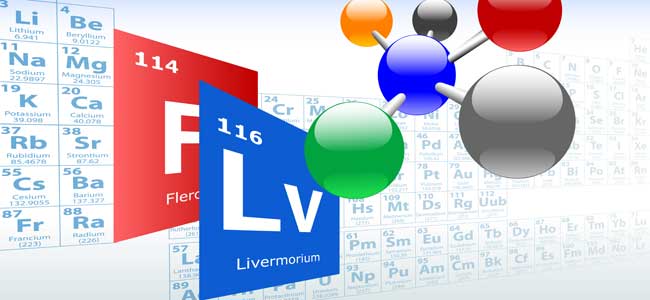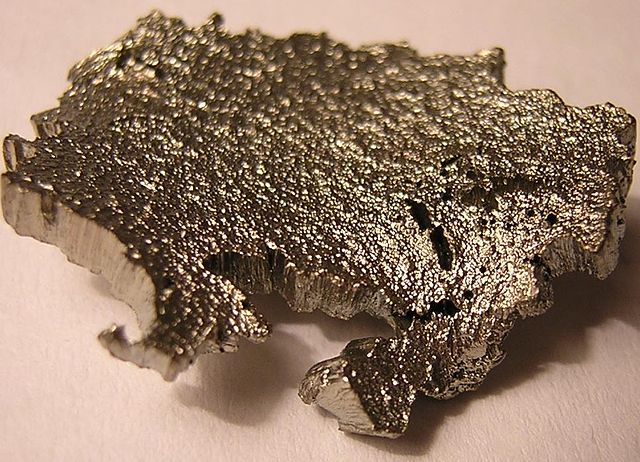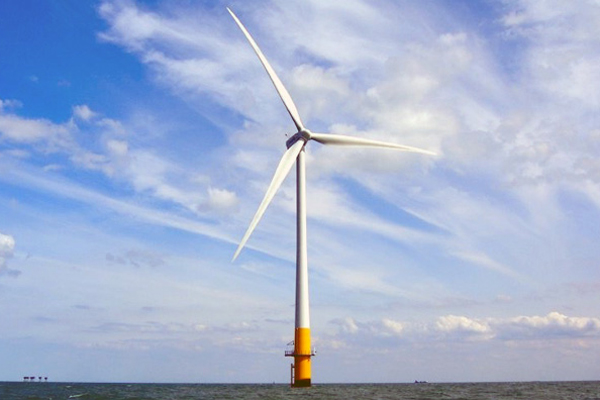Elementary, My Dear: 8 Elements You Never Heard Of
Elementary, My dear

Unless you're a real science geek, chances are you never knew these eight elements even existed. Nonetheless, many of them form the foundations of modern life, from europium (a critical element in television and computer screens) to tellurium (used in solar panels and memory chips). Here's a sample of little-known but important elements you'd rather not live without.
Europium

Next time you're traveling through Europe, take note of some euro paper banknotes. They contain tiny amounts of europium, a hard, silvery metal, as an anti-counterfeiting measure.
There are a handful of places in the world where europium-containing ore is mined, but deposits of the rare element (atomic number 63) are in short supply. Few people cared until the invention of the television.
Early color television programs were barely colored: The blues were muted, yellows appeared somewhat bleached out and whites were dingy and grayish. The reason? Nobody could find a way to reproduce a strong, rich red color, so the other colors were toned down to maintain some balance.
Then, once it was discovered that europium reproduced a robust red in television (And later, computer) screens, the scramble for europium supplies was on. Mines in China, Russia and a small mine in California supply most of the world's europium.
Argon

If you live or work in a new or recently renovated building, chances are you're within spitting distance of a cache of argon: Argon (atomic number 18) is often used between the double panes of glass in energy-efficient windows because of its low thermal conductivity.
Argon is a noble gas that's more common in the Earth's atmosphere than even carbon dioxide. In addition to its uses in homes—incandescent light bulbs are filled with argon because it keeps the filaments from burning away—argon has numerous industrial uses, from arc welding to laser surgery.
Get the world’s most fascinating discoveries delivered straight to your inbox.
Though it's generally safe, pure argon is heavier than air and can be lethal in areas where it displaces oxygen. It's used in poultry production to asphyxiate birds, but it can also suffocate people if it's allowed to concentrate in an enclosed area.
Scandium

First discovered in 1879, scandium (atomic number 21) was named for Scandinavia by chemist Lars Fredrik Nilson. Though it's fairly common in the Earth's crust, nobody had any real use for this silvery metal until about 100 years after its discovery.
But in the 1970s, metallurgists found that aluminum-scandium alloys are strong and lightweight, making it useful in aerospace components. It wasn't long before sporting-equipment manufacturers started using the alloys in everything from baseball bats to lacrosse sticks.
Beryllium

In Isaac Asimov's sci-fi story "Sucker Bait," scientists struggle to understand why all the colonists of the planet known as Junior died after settling on its surface. Finally, one mutinous renegade realizes that high levels of beryllium in the soil caused the colonists to slowly die of berylliosis.
The dangers of beryllium aren't just the stuff of fiction, however: The element (atomic number 4) is recognized as a carcinogen by the International Agency for Research on Cancer.
In another form, however, beryllium is highly desirable, even priceless. When combined with trace amounts of chromium, beryllium takes on a beautiful green hue as the gemstone commonly known as the emerald.
Antimony
Vanity, thy name is antimony, to paraphrase Shakespeare. The heavy metallic element (atomic number 51) is used today as an ingredient in cosmetics, and has been since the earliest days of ancient Egypt.
Additionally, antimony is used as a flame retardant in children's cloths, automobiles, toys and aircraft. And if you've ever admired the warm, silvery glow of pewter mugs and dinnerware, thank antimony: Most pewters are a combination of tin, copper and antimony.
Gallium

Few elements are weirder than gallium: A relatively soft, glittering metal, it's widely used today in semiconductors and other electronics, as well as in the pharmaceutical industry.
But in years past, gallium (atomic number 31) was a key part of a favorite parlor trick for magicians because it melts when it's just slightly warmer than room temperature. Thus, spoons that are made of gallium look normal, but when dipped into a cup of hot tea will instantly dissolve. Even holding a gallium spoon in your hand too long will create a drippy, metallic mess.
Tellurium

Tellurium, a silvery-white metal first discovered in Transylvania, is often used in solar panels, computer memory chips and rewritable optical discs. Its name comes from the Latin word for earth (tellus).
Tellurium (atomic number 52) is considered by most experts to be mildly toxic, though it's unusual to find someone who has suffered serious harm from it. How to tell if someone has been exposed to high levels of tellurium? As their body metabolizes telluride, their breath will have a pungent, garlic-like odor — as befits an element first found in Dracula's legendary homeland.
Dysprosium

"Hoarding gold is for libertarians. Bitcoin mining is for nerds," wrote Jonathon Keats in Wired. "Really adventurous investors — especially fans of the stranger stretches of the periodic table — ought to consider stockpiling something more intense, like industrially valuable exotic elements."
High on the list of rare, valuable elements is dysprosium (atomic number 66), which is named after the ancient Greek dysprositos, meaning "hard to get," appropriately enough. The soft, metallic substance is in big demand for electric motors, especially those in electric vehicles and wind turbines, which has earned dysprosium a place on the U.S. Department of Energy's list of critical materials for the green economy.
Follow Marc Lallanilla on Twitter and Google+. Follow us @livescience, Facebook & Google+.



